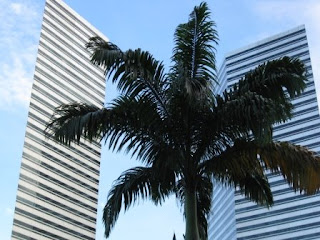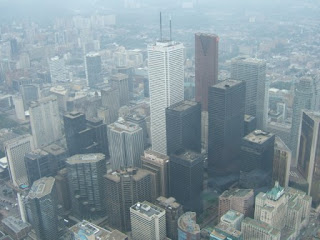The People's Alliance for Democracy tactics to close down Bangkok's two main airports are slowly beginning to affect our plans for travelling between Singapore, Thamuang and England. We have sixteen flights booked between now and 4 January and almost all of them involve passing through Suvarnabhumi (pronounced Sue Varna Pume). Thanks to the PAD's demonstrations it looks like the first of those flights, which takes place on Wednesday night, will have to be re-arranged.
Khamma is spending some time in Singapore and the plan was for her to return to the village on Wednesday night. The latest news is that Bangkok airport will not re-open before Tuesday at the earliest, but this is the usual ill founded political optimism and even if the PAD went home today how long do you think it will take to clean up the mess in the airport and get systems running again? It will take a least 48 hours and more like 72 hours to become operational. The protesters have even taken over the control tower and that isn't just a matter of putting the plug back in to the electricity! Passenger safety has to come first. So plan B is for Khamma to stay a little while longer in Singapore.
The next milestone is 12 December when I leave the Singapore project and start my holiday in Thamuang which involves flying to Bangkok and then on to Ubon Ratchathani. I am starting to get the feeling these plans might be affected as well, and this directly affects our plan to return to UK for Christmas.
There is really only one alternative and that is to travel to the UK on the 12 December instead of the 18th. It seems an attractive proposition except I don't get to go up to Owerrrouse and the cost might be a factor as well. It is difficult trying to pre-empt what the situation might be and pleading with the airlines to change the tickets. It also means Khamma wouldn't be back in Thamuang for another six weeks and the family wouldn't too happy about that. It also means I have to look at another plan to get my possessions out of Singapore because some of them were going up to Owerrrouse. But I suppose these are minor consequences at the moment. This is Thailand.
What is the problem in Bangkok? The new middle classes want the government out and they will then replace the democratic process of one man one vote with a selection process that will appoint MPs according to their profession, meaning the rural farmers will not get a look in. It is a return to the old feudal system where the power is the hands of the few. It is an entirely bonkers idea of course but these people are hell bent on usurping the government, which by the way they think is a puppet for the controversial Thaksin. This is the guy the British government effectively kicked out of the UK a couple of weeks ago because he has been found guilty on corruption charges and is on the run from the Thai police.
So you see how complex this situation is; how can you support a party that calls itself democratic but isn't and the other party is one where the 'leader' will be put into jail the moment he sets foot in Thailand. This is Thailand.
The current Prime Minister is in self imposed exile in Chiang Mai about 400 miles from Bangkok. This is a big mistake because he should be where the trouble is and showing leadership and control. I imagine the rural people are starting to ask questions about this.
This is Thailand.
Finally the army and the police are going to have clear this situation up but they are reluctant to make the first move in case they are blamed for the carnage that will surely follow. It is a case of who blinks first! But I think they have already played a major part in allowing the situation to develop. Let me ask a few questions.
- Why did the police and army allow thousands of people to descend on Suvarnabhumi? The only access is by road and the airport is in the middle of nowhere. Intelligence gathering must have pre-warned them of the PAD plans.
- Why did they allow the PAD to take over the control tower? Every airport in the world operates in fear of terrorist attack and the most vulnerable part of an airport is the control tower. Why wasn't the plan to protect the tower put into effect?
- When Suvarnabhumi was taken over wasn't it obvious the other airport at Don Muang would suffer the same fate? DM is the temporary home of the government whilst the Parliament in Bangkok city is under siege. The tactic is obvious, why didn't the army and police pick up on the intelligence and act?
- Why is the army allowing food and drink supplies to filter through to the protesters in the airports? There are reports of vendors making a killing. Once the protesters are in the confines of the airport it is easy to seal off the entry routes and starve them out.
This is Thailand.








.JPG)



